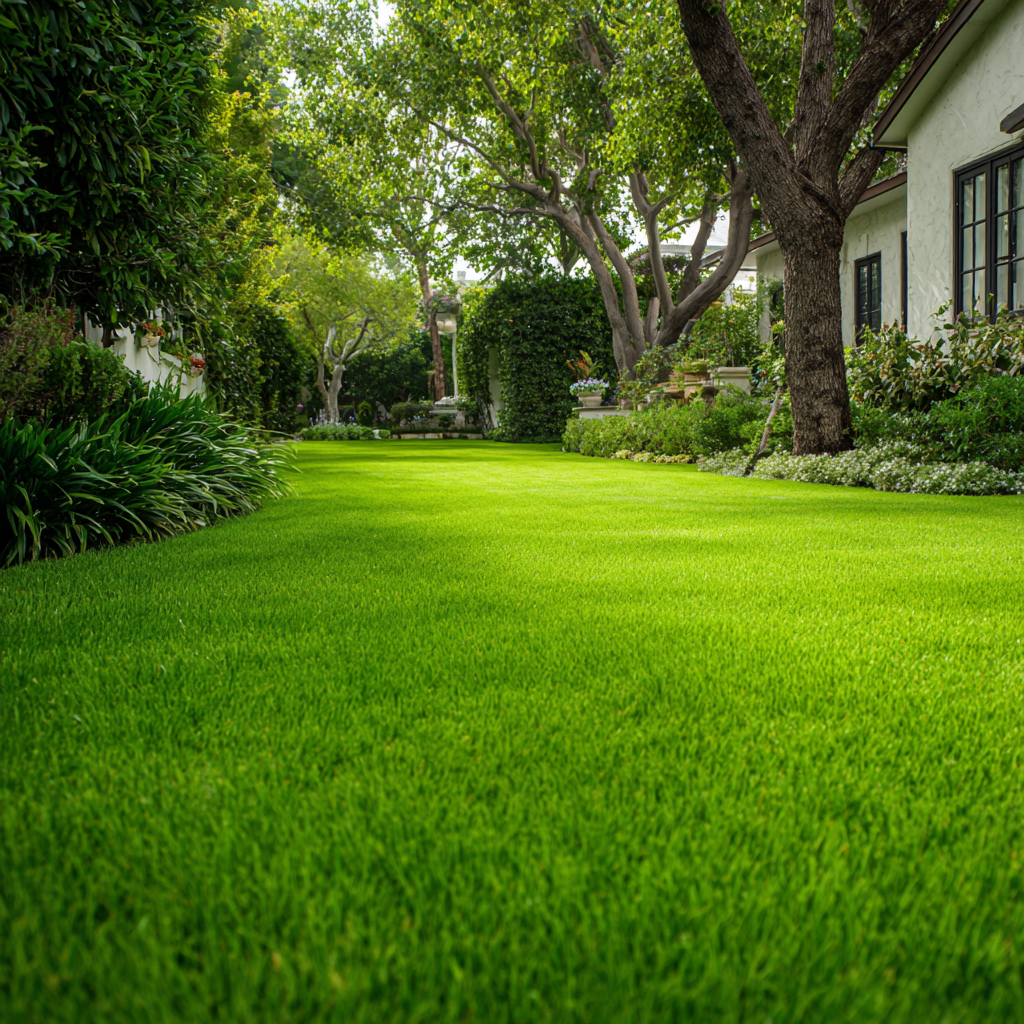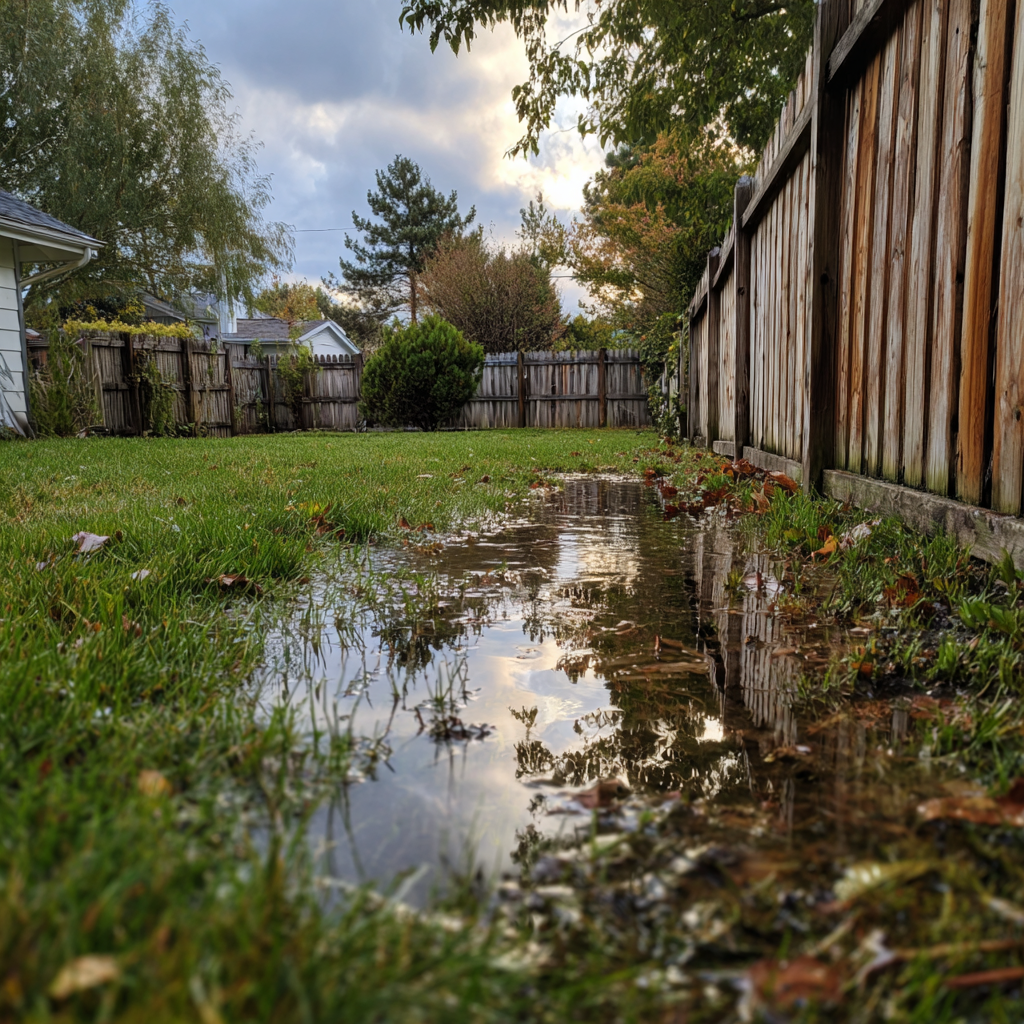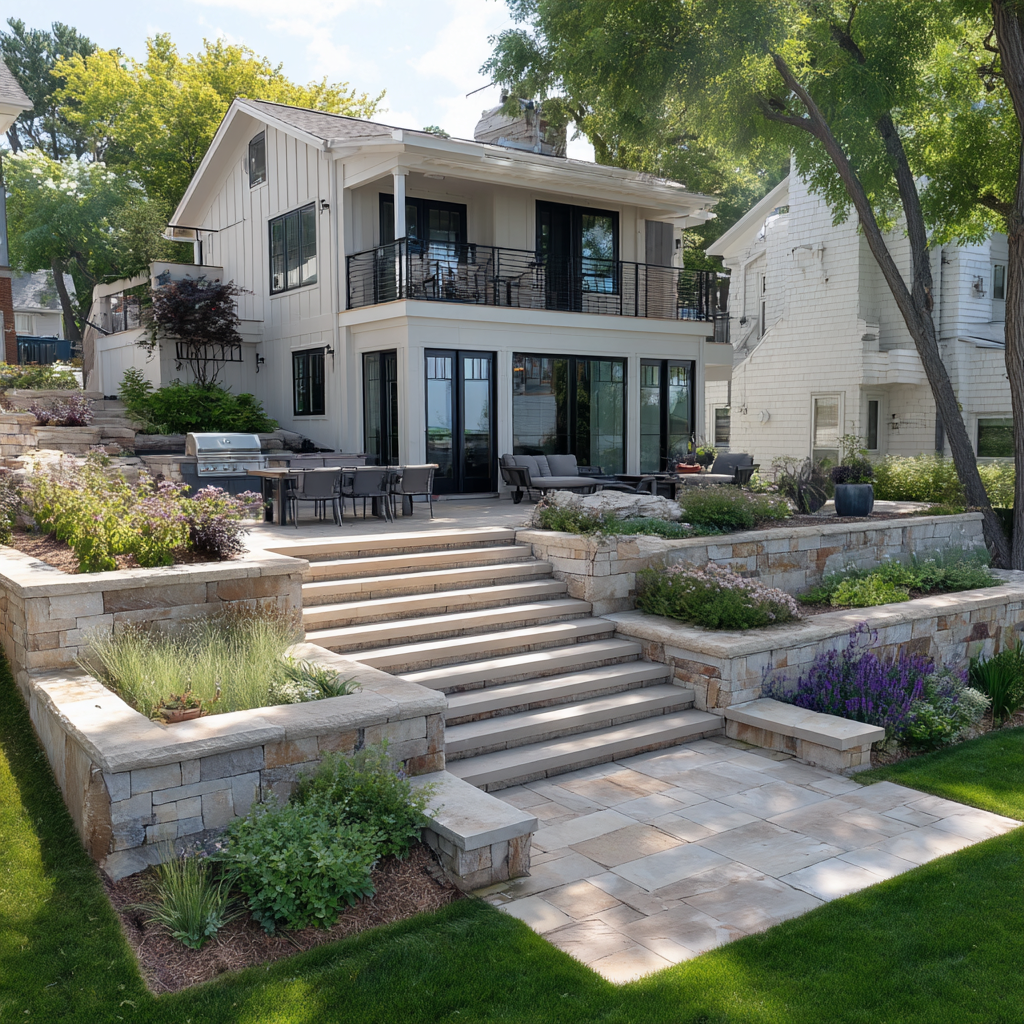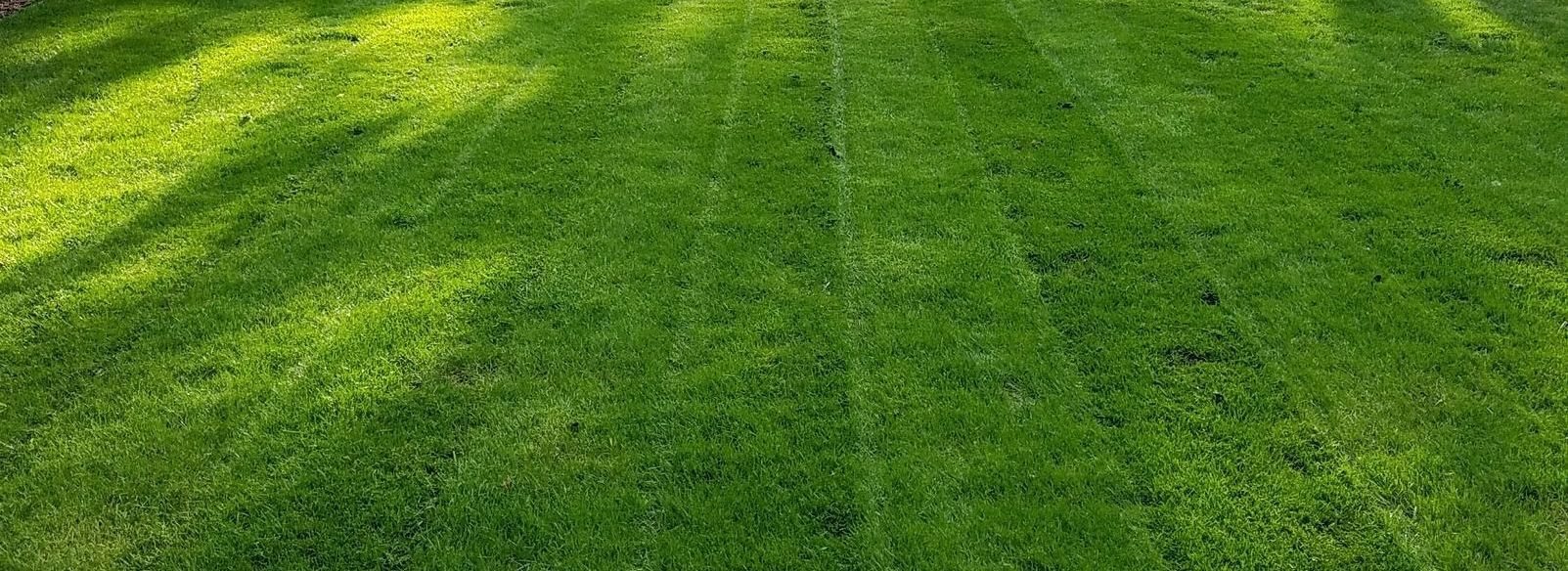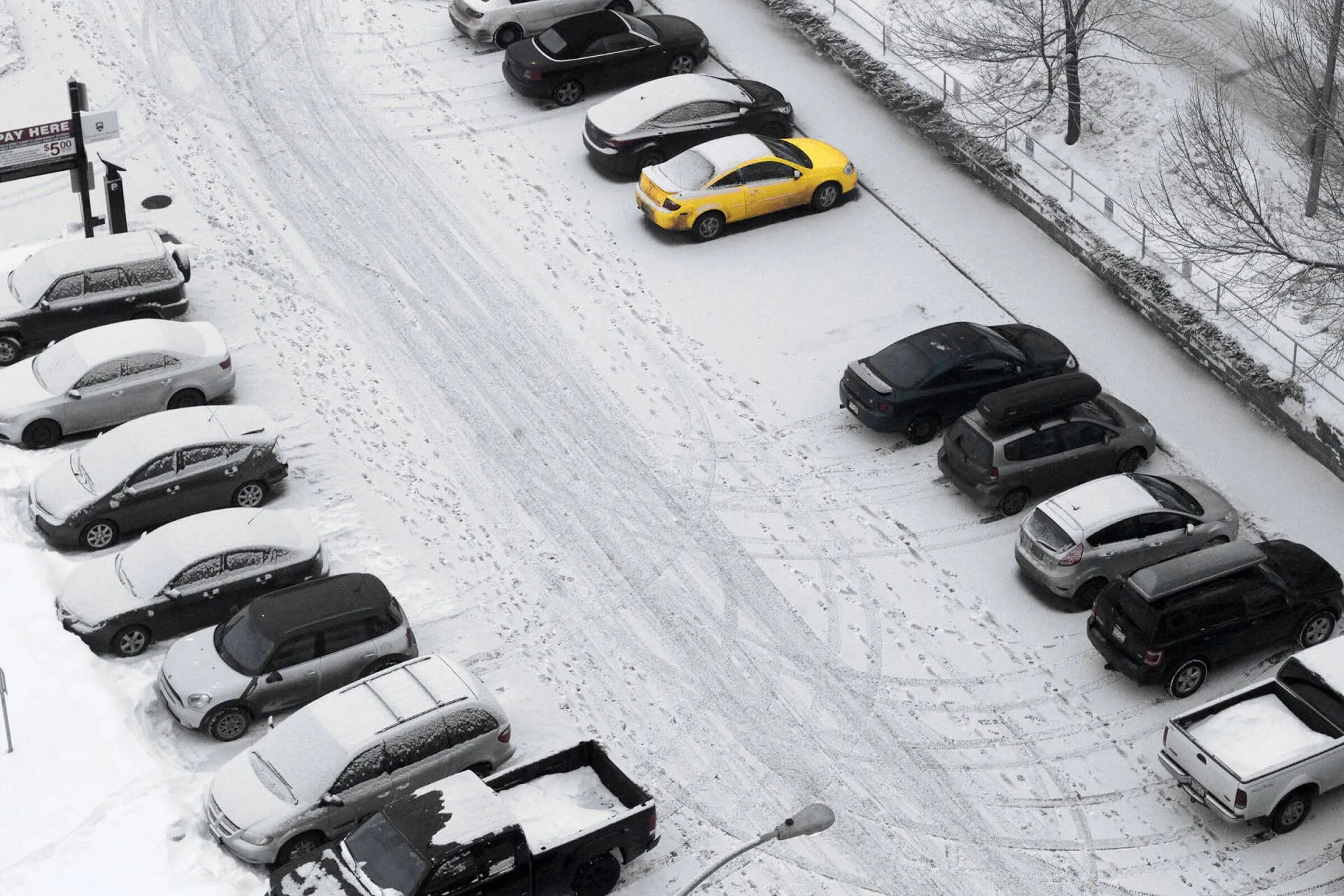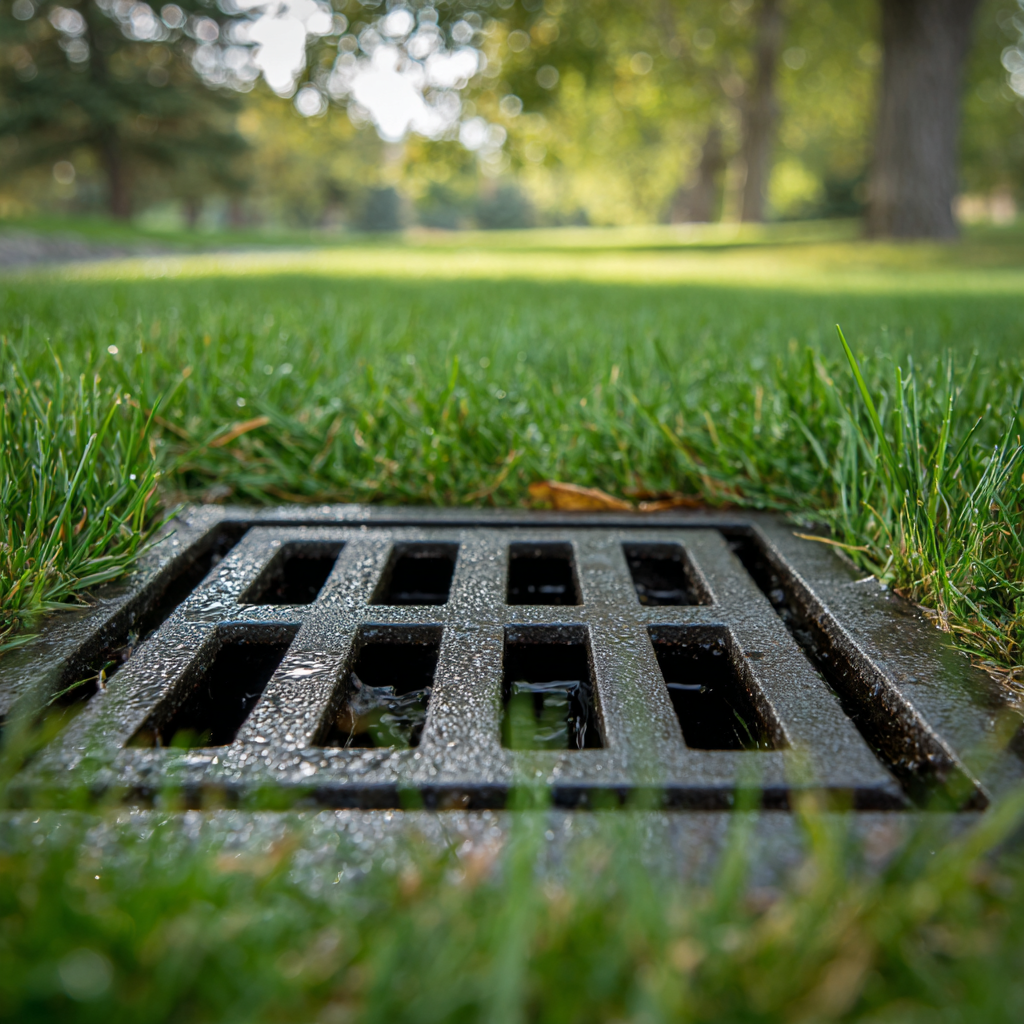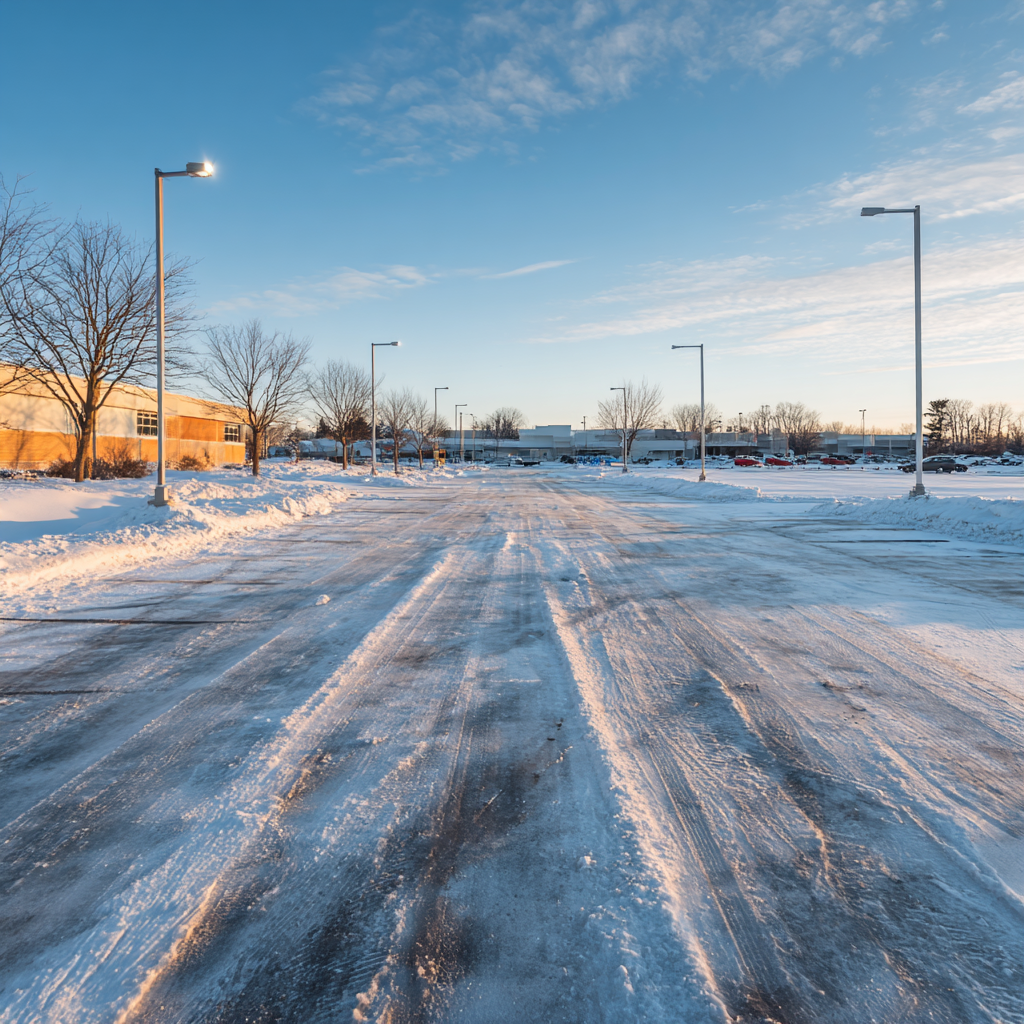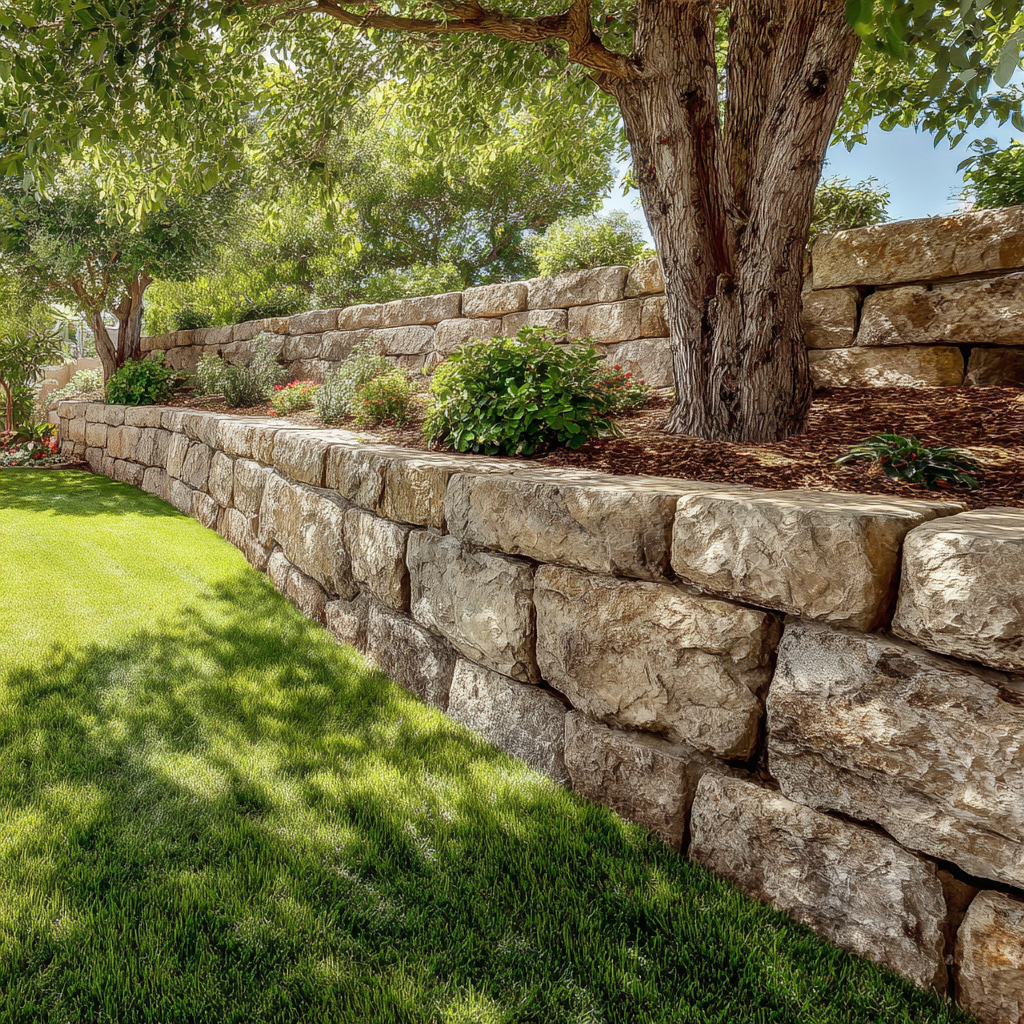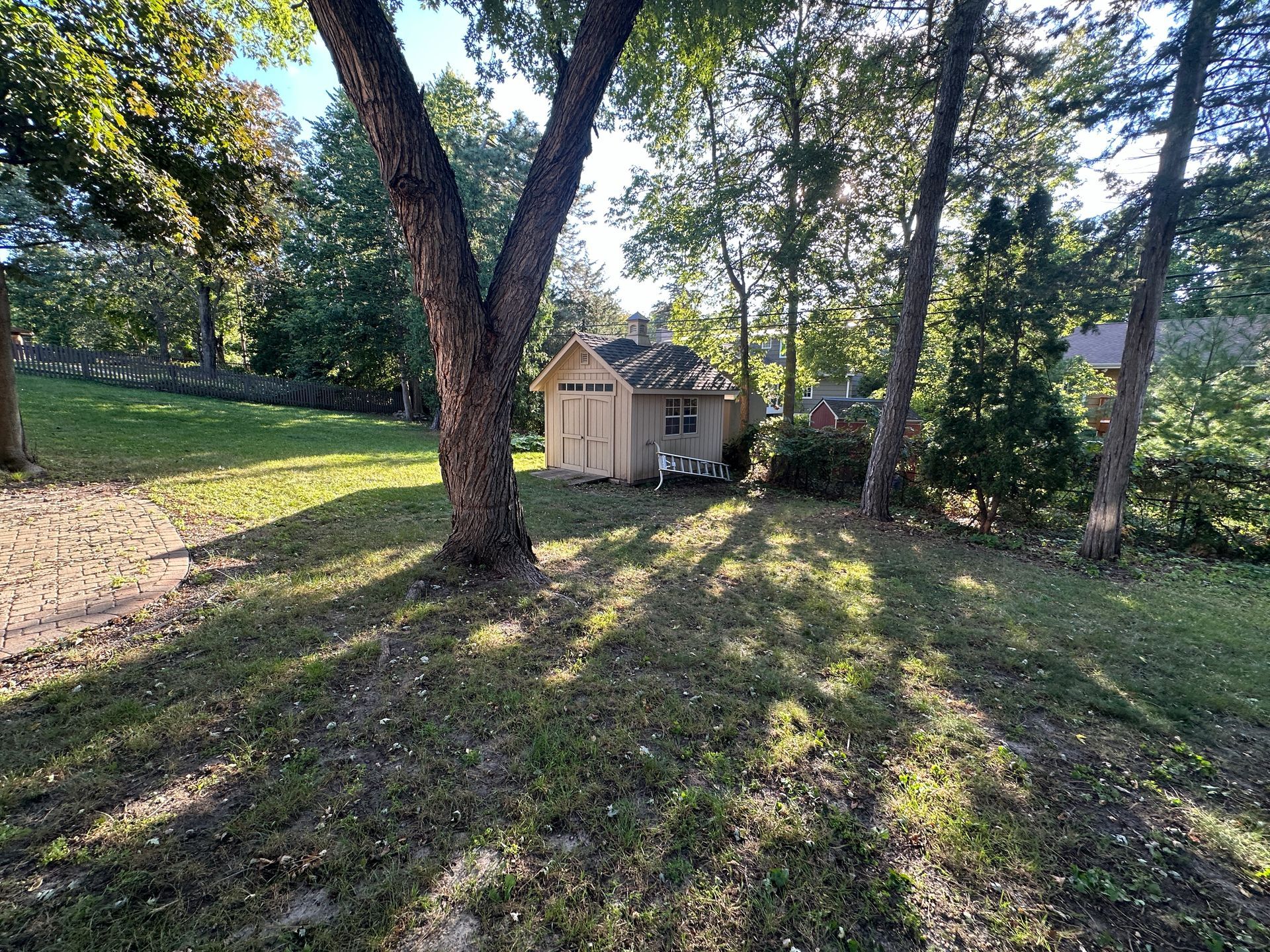How to Renovate an Old Lawn in St. Paul (The Right Way)
Renovating an Old Lawn in St. Paul
You just moved into an old St. Paul home. You love the house, the neighborhood, the mature trees. But the lawn is a disaster. Full of weeds, thin grass struggling in bare patches, bumpy and uneven from years of neglect. The previous owners clearly let it go or didn't know how to fix it properly.
You want a lawn you can be proud of. A yard your kids can actually play on. But you don't know where to start or what order to do things. Should you seed first? Fix the bumps? Kill the weeds? And should you do this in spring or fall?
Based on what we've seen throughout St. Paul, most people do lawn renovation in the wrong order and waste money. They seed before killing weeds and wonder why the weeds take over. They seed before fixing grades and then have to disturb everything when they finally address the bumps. They don't fix drainage and watch their investment wash away in the first heavy rain.
We help new St. Paul homeowners whip their yards into shape the right way. Following the correct sequence ensures each step builds on the previous one instead of creating more problems.
Why Order Matters in Lawn Renovation
Doing lawn renovation steps in the wrong order wastes time and money. We've been called to properties where homeowners did multiple steps out of sequence and had to redo work, spending money twice to get results they could have achieved once.
Here's what happens with wrong sequencing: Seeding before killing weeds means new grass gets choked out immediately by existing weeds. You've wasted seed and still have a weedy lawn. Seeding before fixing grades means when you finally bring in equipment to address bumps and low spots, you destroy the grass you just established. Now you're spending money on seed again. Fixing grades without addressing drainage means the first heavy rain washes out your grading work. Topsoil you just brought in ends up in the street.
Following the right sequence prevents these expensive mistakes. Every step you take gets you closer to your goal instead of creating problems that require more fixes.
Spring vs. Fall: When Should You Renovate?
One of the first questions new homeowners ask is about timing. Should you start in spring when everything's growing, or wait until fall?
Fall is ideal for lawn renovation in Minnesota - specifically late August through September. Cooler temperatures, more consistent moisture, and less weed pressure create perfect conditions for grass establishment. Seeds germinate well in warm soil with cool air. Fall seeding faces less competition from weeds that thrive in spring heat.
Spring works too, particularly late April through May, but comes with challenges. Weed pressure is significantly higher in spring. Weather is less predictable - you might get hot dry stretches right when your new grass needs consistent moisture. Spring-seeded lawns face more stress establishing.
That said, if your lawn is really bad, don't wait months for the ideal window. Start the process whenever you move in. Some steps can happen any time of year - killing weeds and fixing grades don't require specific seasons. The seeding or sodding should happen in optimal windows, but you can prepare everything beforehand.
We help you plan timeline based on when you moved in and what your lawn needs. If you're moving in during summer, we might kill weeds and fix grades immediately, then seed in early fall when conditions are right.
Step 1: Kill the Weeds First
Your old St. Paul lawn is probably full of dandelions, crabgrass, creeping charlie, and other weeds that have taken over while the grass declined. These weeds will choke out new grass seed you're trying to establish. They're aggressive, well-established, and will win the competition for space, water, and nutrients.
Even if you don't plan to spray weeds regularly in the future, we recommend one-time weed spray to create the space needed for new grass to fill in and get thick enough not to be immediately overrun. Without killing weeds first, you're seeding into a lawn where weeds already dominate. The new grass comes up, struggles against established weeds, and loses. We've seen it happen repeatedly.
The spray needs time to work - typically 2-3 weeks before moving to next steps. Yes, the lawn will look worse temporarily as weeds die and turn brown. That's part of the process. You're clearing space for good grass to establish.
What we spray for depends on what's in your lawn. Broadleaf weeds like dandelions, clover, and plantain are common in St. Paul. Creeping charlie is extremely prevalent in our area and particularly aggressive. If crabgrass is present, we address that. Any invasive weeds taking over get targeted.
Timing considerations matter here. Weeds need to be actively growing to absorb spray effectively. You can't seed for 2-4 weeks after spraying depending on the product used. Plan accordingly so you're not waiting through ideal seeding windows. If you spray in late August, you might not be seeding until mid-September. That's fine - better to do it right than rush and waste effort.
Step 2: Regrade and Topdress to Fix the Surface
Now that weeds are dying and clearing space, address the bumps, dips, and uneven areas that make your old lawn difficult to use and maintain. Old St. Paul lawns often have low spots where water collects and creates soggy areas. Depressions where old trees were removed years ago. Washed out sections from poor drainage that's been ignored. Bumpy, uneven surfaces that make mowing challenging and the yard look rough.
Regrading and topdressing accomplish several goals. Smooth out the lawn so it's nicer to mow. Eliminate low spots that stay soggy and won't support grass. Fill depressions and level surfaces. Make the yard more useable - kids can actually play on smooth lawn without tripping on bumps. Create a proper base before investing in grass establishment.
The process involves bringing in quality topsoil, filling low spots and depressions, smoothing bumpy areas, creating gentle grades for proper drainage, and leveling surfaces for easier long-term maintenance. We're not trying to make everything completely flat - some contour is fine and often desirable. We're eliminating problem areas and creating functional surface.
This step comes before seeding for critical reasons. You're going to disturb the soil doing grading and topdressing work. Any seed you put down first gets buried, displaced, or washed away during this work. Fix the foundation properly, then establish grass on top. We've been called to properties where homeowners seeded first, then realized they needed significant grading work. They had to do the grading anyway, destroying the new grass they'd just spent time and money establishing. Then they seeded again. Wrong order cost them twice.
Step 3: Fix Major Erosion and Drainage Issues
Before investing in new grass, protect that investment from washout and ongoing damage. If you have erosion problems or drainage issues, they'll destroy your renovation work. We've seen newly graded and seeded lawns get washed out in the first heavy rain because underlying drainage problems weren't addressed.
Common issues in old St. Paul yards include downspouts dumping water directly onto lawn causing erosion, areas where water pools creating bare spots that won't support grass, slopes too steep to maintain dense turf, and drainage from neighboring properties causing problems on your lawn.
Solutions we install depend on specific issues. Underground downspout extensions move concentrated roof water away properly instead of dumping it where it causes erosion. Regrading or installing French drains addresses areas where water pools. Catch basins collect water at problem points. Sometimes steep slopes need landscaping solutions or erosion control that's more appropriate than trying to maintain grass on grades that won't support it.
Sometimes this means coordinating lawn renovation with drainage projects. If your drainage issues are significant, we might recommend addressing those first or simultaneously with lawn work. The drainage work might disturb some areas, so doing it before final grass establishment makes sense.
Why this step matters: Erosion washes away topsoil you just brought in for grading. Water pooling prevents grass from establishing in those areas - you'll have bare spots no matter how much you seed. Steep slopes won't hold seed or sod effectively. Fix these issues once, protect your lawn investment long-term. Better to address drainage properly than redo lawn work after it gets damaged.
Step 4: Decide Your Grass Establishment Method
Now that you've killed weeds, fixed grades, and addressed drainage, you're ready for establishing grass. You have three main options, each with different costs, timelines, and results. We help you choose based on your lawn's current condition, budget, and how soon you need the yard useable.
Overseeding means spreading seed over existing lawn to thicken it up. This works when you have decent grass already, just thin or weak spots. It's the least expensive option but takes longer to see dramatic results. Overseeding isn't ideal for lawns that are mostly weeds with little existing grass - you need something to build on. We've done overseeding on St. Paul lawns that just needed a boost after weed control and topdressing. If your lawn is 60-70% reasonable grass, overseeding can work well.
Full lawn reseeding means starting over with seed on the entire lawn. This is better for lawns that are mostly weeds or very thin with little viable grass remaining. More affordable than sod but requires patience. Takes 6-8 weeks before you can really use the lawn. You need to keep off the grass while it establishes, which is challenging for families with kids who want to use the yard. Requires consistent watering during establishment. Results are excellent when done properly in the right conditions. We've reseeded countless St. Paul lawns with great results when homeowners can manage the establishment period.
Sodding gives you an instant lawn that's useable in 2-3 weeks. Most expensive option but provides immediate results. Great for families with kids who need the yard useable quickly. Eliminates the waiting period and uncertainty of seeding. Still requires watering and care during establishment but handles foot traffic sooner than seeded lawns. We install sod on St. Paul properties where homeowners want immediate results and are willing to invest more upfront.
How we help you decide involves assessing current lawn condition honestly, discussing budget and timeline, considering how soon you need the lawn useable for your family, explaining realistic expectations for each option, and recommending the best approach for your specific situation. There's no single right answer - it depends on your priorities and constraints.
What Happens If You Skip Steps or Do Them Wrong
We've seen every mistake homeowners make with lawn renovation. These are expensive lessons we help you avoid.
Seeding without killing weeds first: New grass comes up but gets choked out by existing weeds within weeks. The weeds were already established with strong root systems. Your new grass seedlings can't compete.
You've wasted money on seed, wasted time on the seeding process, and still have a terrible lawn. Now you're back to square one but you've spent money and time.
Seeding before fixing grades: You establish grass, then bring in equipment to fix bumps, low spots, and uneven areas. The grading work destroys the grass you just established. Now you have to seed again, spending money twice on something that should have been done once. We get calls about this situation regularly - homeowners who didn't realize grading would disturb their new grass.
Not addressing drainage before seeding: First heavy rain washes out newly seeded areas. Erosion creates new low spots and bare areas. Seed and topsoil you just installed wash away. You're back to square one but now you've spent money on materials that are gone. The drainage problem still exists and will continue causing issues.
Doing it in the wrong season: Spring seeding during a hot dry stretch means grass struggles to establish. High heat and inconsistent moisture stress new grass. Meanwhile, weeds thrive in spring conditions and outcompete your new grass. Results are disappointing despite your effort and investment.
These mistakes cost real money and significant time. Following the right sequence prevents all of them.

Working With Lawn Renovation Professionals
What we do differently starts with walking your property and thoroughly assessing current condition. We identify underlying issues that might not be obvious - drainage problems contributing to thin grass, compacted soil preventing establishment, shade levels affecting grass viability. We create a plan addressing everything in the right order so you're not working backwards.
We help you understand options and set realistic expectations. If your lawn is 90% weeds in heavy shade, we're honest about what's achievable. Maybe some areas should be landscaped rather than maintained as grass. We coordinate timing so each step builds on previous work logically. We ensure you're not wasting money on approaches that won't work for your specific conditions.
Why professional help matters comes down to experience and equipment. We've renovated countless St. Paul lawns over years. We know what works in local soil and climate conditions. We have equipment to do grading and topdressing properly - this isn't achievable with hand tools for most lawns. We source quality seed and sod appropriate for your situation and conditions. We can identify and fix underlying issues homeowners might miss that would undermine renovation success.
You can DIY some steps if you want to be hands-on and save money. Some homeowners want to handle parts themselves. We can guide you on proper order and techniques. Help with the steps that require equipment or expertise you don't have. You handle what you're comfortable with. We've worked with plenty of homeowners who did some work themselves while bringing us in for specific parts.
Timeline and Expectations
Realistic timeline for full lawn renovation follows a logical sequence. Week 1-2 involves weed killing and waiting for weeds to die off. This can't be rushed - the spray needs time to work effectively. Week 3-4 covers grading, topdressing, and drainage work if needed. This is when we're moving soil, installing drainage systems, creating the proper base. Week 5-6 is when seeding or sodding happens, assuming timing aligns with optimal windows. Week 7 and beyond is establishment and care.
If you're sodding, the lawn is useable for light foot traffic in 2-3 weeks once roots have established into the soil below. Full normal use happens in 4-6 weeks. Kids can play on it sooner than seeded lawns.
If you're seeding, keep off the grass for 6-8 weeks while it establishes. This is challenging for families but necessary for good results. Full use comes in 8-10 weeks. Results continue improving over the first full season as grass fills in and matures.
Phasing the work is possible if budget doesn't allow doing everything at once. Sometimes full renovation happens in one push. Sometimes we phase over time. Kill weeds and fix grades one year, then seed or sod the following season when budget allows. As long as you're doing things in the right order, phasing can work fine. Each completed phase should leave you better than you started even if the full plan takes time to implement.
Maintenance After Renovation
Your new or renovated lawn needs proper care to maintain results. First season after seeding requires consistent watering until grass is established - this usually means watering daily or every other day depending on weather. Mowing at proper height of 3 to 3.5 inches helps grass develop strong roots. Avoid heavy use until grass is well-established - those first 6-8 weeks are critical. Light fertilization supports growth without overwhelming new grass.
First season after sodding involves watering to help roots establish into soil below the sod. Mowing once sod is rooted, typically 2-3 weeks after installation. You can use the lawn sooner than seeded areas but it still needs care during establishment.
Long-term maintenance becomes much easier than what you dealt with before renovation. Regular mowing at proper height keeps grass healthy. Appropriate fertilization on a schedule we can help you determine. Weed control as needed, though you'll need much less than before renovation because thick healthy grass prevents most weed problems. Overseeding thin areas as needed over time maintains density.
Your renovated lawn will be dramatically easier to maintain than the disaster you started with. That's one of the benefits beyond just appearance - properly renovated lawns require less ongoing work to keep nice.
Cost Expectations
Weed killing runs $100-$300 depending on lawn size and weed severity. Heavy infestations cost more to treat effectively.
Grading and topdressing costs $1,500-$5,000 or more depending on the amount of work needed. Small adjustments are less expensive. Significant grading with lots of topsoil needed runs higher.
Drainage improvements range from $500-$5,000+ depending on issues being addressed. This is often separate from lawn renovation budget but important to factor in if your property needs drainage work.
Seeding costs $500-$2,000 for a full lawn depending on size. This includes seed, starter fertilizer, and labor.
Sodding runs $3,000-$10,000+ depending on lawn size. Roughly $1-$2 per square foot installed depending on sod type and site conditions.
Total lawn renovation cost ranges widely based on lawn size, current condition, and approach chosen. We provide detailed estimates after assessing your specific property so you understand exactly what you're looking at.
Do It Right, Do It Once
You just moved into your St. Paul home. The lawn is a mess but you want to fix it properly. You want a yard you can enjoy and build on for years to come, not a problem you're constantly trying to patch.
Following the right order - kill weeds, fix grades and drainage, then establish grass - ensures every step gets you closer to your goal instead of creating new problems. Skipping steps or doing things backwards wastes time and money we've seen homeowners spend on wrong approaches.
We help new St. Paul homeowners whip their yards into shape the right way. Every lawn renovation project we do, we're thinking about long-term success and proper sequencing. Whether you're doing all the work at once or phasing over time, following the correct sequence protects your investment and gets you the results you want.
Your goal is a beautiful, useable lawn your family can enjoy. Our goal is helping you get there efficiently without the expensive mistakes that come from wrong sequencing or poor planning.
Just moved into a St. Paul home with a lawn that needs help? Contact KG Landscape. We'll assess your lawn, create a plan in the right order, and help you understand all your options for getting the results you want.
Frequently Asked Questions
Should I renovate my lawn in spring or fall in Minnesota?
Fall is ideal for lawn renovation in Minnesota, specifically late August through September. Cooler temperatures, consistent moisture, and reduced weed pressure create optimal conditions for grass establishment. Spring works too (late April through May) but comes with higher weed pressure and less predictable weather. If your lawn is really bad, start the preparation process whenever you move in - kill weeds and fix grades any time, then seed or sod during optimal windows.
Can I just overseed my weedy lawn or do I need to start over?
If your lawn is mostly weeds with little existing grass, overseeding won't work well. You need decent grass to build on - roughly 60-70% viable grass for overseeding to be effective. For lawns that are primarily weeds, kill weeds first, then do full lawn reseeding or sodding. We assess your current lawn condition and recommend the approach that will actually work. Overseeding a lawn that's 80% weeds just wastes money on seed that gets choked out.
How long does it take to renovate a lawn from start to finish?
Full lawn renovation typically takes 6-10 weeks from start to finish. Week 1-2 for weed killing, week 3-4 for grading and drainage work, week 5-6 for seeding or sodding, then 4-6 additional weeks for establishment. Sodded lawns are useable sooner - light use in 2-3 weeks, full use in 4-6 weeks. Seeded lawns need 6-8 weeks before use, with full results in 8-10 weeks. Timeline varies based on season and weather conditions.
Is it worth paying for professional lawn renovation or should I DIY?
Professional renovation makes sense when you need grading work (requires equipment), want proper weed control and timing, or lack experience with seeding techniques. DIY can work for simple overseeding if you have decent existing grass. For full renovations on neglected lawns, professional help usually delivers better results and saves money compared to DIY mistakes. We've fixed many failed DIY attempts that cost more than doing it right initially. You can DIY some steps and hire out others based on your skills and equipment.
How much does full lawn renovation cost in St. Paul?
Full lawn renovation typically costs $3,000-$10,000+ depending on lawn size and approach. This includes weed killing ($100-$300), grading and topdressing ($1,500-$5,000+), and either seeding ($500-$2,000) or sodding ($3,000-$10,000+). Add drainage improvements if needed ($500-$5,000+). Smaller lawns with minimal grading needs run toward lower end. Larger lawns needing significant work and sodding run higher. We provide specific estimates after assessing your property.
